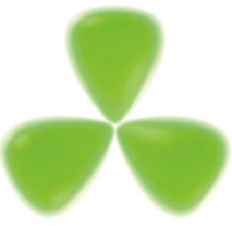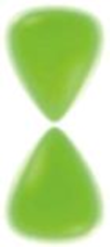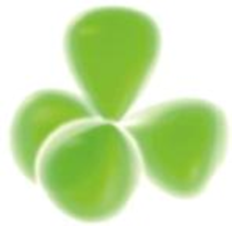
General Chemistry: Atoms First
2nd Edition
ISBN: 9780321809261
Author: John E. McMurry, Robert C. Fay
Publisher: Prentice Hall
expand_more
expand_more
format_list_bulleted
Textbook Question
Chapter 5.4, Problem 5.11CP
Identify each of the following sets of hybrid orbitals:



Expert Solution & Answer
Want to see the full answer?
Check out a sample textbook solution
Students have asked these similar questions
Please help answer number 2. Thanks in advance.
How do I explain this? Thank you!
When an unknown amine reacts with an unknown acid chloride, an amide with a molecular mass of 163 g/mol (M* = 163 m/z)
is formed. In the infrared spectrum, important absorptions appear at 1661, 750 and 690 cm. The 13C NMR and DEPT spectra
are provided. Draw the structure of the product as the resonance contributor lacking any formal charges.
13C NMR
DEPT 90
200
160
120
80
40
0
200
160
120
80
40
0
DEPT 135
T
200
160
120
80
40
0
Draw the unknown amide.
Select
Dow
Templates
More
Frage
Chapter 5 Solutions
General Chemistry: Atoms First
Ch. 5.1 - Predict the shapes of the following molecules or...Ch. 5.1 - Acetic acid, CH3CO2H, is the main organic...Ch. 5.1 - Benzene, C6H6, is a cyclic molecule in which all...Ch. 5.1 - What is the geometrical arrangement of charge...Ch. 5.3 - Describe the bonding in propane, C3H8, a fuel...Ch. 5.4 - Describe the hybridization of the carbon atom in...Ch. 5.4 - Describe the hybridization of each carbon atom in...Ch. 5.4 - Describe the hybridization of the carbon atom in...Ch. 5.4 - Describe the hybridization of the carbon atom in...Ch. 5.4 - Describe the hybridization of the carbon atom in...
Ch. 5.4 - Identify each of the following sets of hybrid...Ch. 5.4 - The following ball-and-stick molecular model is a...Ch. 5.5 - Construct an MO diagram for the He2+ ion. Is this...Ch. 5.6 - The B2 and C2 molecules have MO diagrams similar...Ch. 5.7 - Draw two electron-dot resonance structures for the...Ch. 5.7 - Why is molecular shape so important in biological...Ch. 5.7 - Prob. 5.17CPCh. 5 - What is the geometry around the central atom in...Ch. 5 - Prob. 5.19CPCh. 5 - Prob. 5.20CPCh. 5 - Prob. 5.21CPCh. 5 - Prob. 5.22CPCh. 5 - Prob. 5.23CPCh. 5 - Prob. 5.24SPCh. 5 - Prob. 5.25SPCh. 5 - Prob. 5.26SPCh. 5 - How many charge clouds are there around central...Ch. 5 - Prob. 5.28SPCh. 5 - Prob. 5.29SPCh. 5 - What shape do you expect for each of the following...Ch. 5 - Prob. 5.31SPCh. 5 - Prob. 5.32SPCh. 5 - Prob. 5.33SPCh. 5 - What bond angles do you expect for each of the...Ch. 5 - Prob. 5.35SPCh. 5 - Prob. 5.36SPCh. 5 - Prob. 5.37SPCh. 5 - Prob. 5.38SPCh. 5 - A potential replacement for the chlorofluorocarbon...Ch. 5 - Prob. 5.40SPCh. 5 - Prob. 5.41SPCh. 5 - Prob. 5.42SPCh. 5 - Prob. 5.43SPCh. 5 - What hybridization do you expect for atoms that...Ch. 5 - Prob. 5.45SPCh. 5 - Prob. 5.46SPCh. 5 - What hybridization would you expect for the...Ch. 5 - Prob. 5.48SPCh. 5 - Prob. 5.49SPCh. 5 - Prob. 5.50SPCh. 5 - Prob. 5.51SPCh. 5 - Prob. 5.52SPCh. 5 - Prob. 5.53SPCh. 5 - Prob. 5.54SPCh. 5 - Prob. 5.55SPCh. 5 - Prob. 5.56SPCh. 5 - Prob. 5.57SPCh. 5 - Prob. 5.58SPCh. 5 - Prob. 5.59SPCh. 5 - Prob. 5.60SPCh. 5 - Prob. 5.61SPCh. 5 - Prob. 5.62CHPCh. 5 - The following molecular model is a representation...Ch. 5 - Prob. 5.64CHPCh. 5 - Prob. 5.65CHPCh. 5 - Prob. 5.66CHPCh. 5 - Prob. 5.67CHPCh. 5 - Calcium carbide, CaC2, reacts with water to...Ch. 5 - Prob. 5.69CHPCh. 5 - The N2O5 molecule has six NO bonds and two NO ...Ch. 5 - In the cyanate ion, OCN, carbon is the central...Ch. 5 - Aspirin has the following connections among atoms....Ch. 5 - Prob. 5.73CHPCh. 5 - At high temperatures, sulfur vapor is...Ch. 5 - Carbon monoxide is produced by incomplete...Ch. 5 - Prob. 5.76CHPCh. 5 - Prob. 5.77CHPCh. 5 - Prob. 5.78CHPCh. 5 - The diatomic cyanide ion (CN) and nitrosonium ion...Ch. 5 - Prob. 5.80MPCh. 5 - Prob. 5.81MPCh. 5 - Prob. 5.82MP
Knowledge Booster
Learn more about
Need a deep-dive on the concept behind this application? Look no further. Learn more about this topic, chemistry and related others by exploring similar questions and additional content below.Similar questions
- Identify the unknown compound from its IR and proton NMR spectra. C4H6O: 'H NMR: 82.43 (1H, t, J = 2 Hz); 8 3.41 (3H, s); 8 4.10 (2H, d, J = 2 Hz) IR: 2125, 3300 cm¹ The C4H6O compound liberates a gas when treated with C2H5 MgBr. Draw the unknown compound. Select Draw с H Templates Morearrow_forwardPlease help with number 6 I got a negative number could that be right?arrow_forward1,4-Dimethyl-1,3-cyclohexadiene can undergo 1,2- or 1,4-addition with hydrogen halides. (a) 1,2-Addition i. Draw the carbocation intermediate(s) formed during the 1,2-addition of hydrobromic acid to 1,4-dimethyl-1,3-cyclohexadiene. ii. What is the major 1,2-addition product formed during the reaction in (i)? (b) 1,4-Addition i. Draw the carbocation intermediate(s) formed during the 1,4-addition of hydrobromic acid to 1,4-dimethyl-1,3-cyclohexadiene. ii. What is the major 1,4-addition product formed from the reaction in (i)? (c) What is the kinetic product from the reaction of one mole of hydrobromic acid with 1,4-dimethyl-1,3-cyclohexadiene? Explain your reasoning. (d) What is the thermodynamic product from the reaction of one mole of hydrobro-mic acid with 1,4-dimethyl-1,3-cyclohexadiene? Explain your reasoning. (e) What major product will result when 1,4-dimethyl-1,3-cyclohexadiene is treated with one mole of hydrobromic acid at - 78 deg * C ? Explain your reasoning.arrow_forward
- Give the product of the bimolecular elimination from each of the isomeric halogenated compounds. Reaction A Reaction B. КОВ CH₂ HotBu +B+ ко HOIBU +Br+ Templates More QQQ Select Cv Templates More Cras QQQ One of these compounds undergoes elimination 50x faster than the other. Which one and why? Reaction A because the conformation needed for elimination places the phenyl groups and to each other Reaction A because the conformation needed for elimination places the phenyl groups gauche to each other. ◇ Reaction B because the conformation needed for elimination places the phenyl groups gach to each other. Reaction B because the conformation needed for elimination places the phenyl groups anti to each other.arrow_forwardFive isomeric alkenes. A through each undergo catalytic hydrogenation to give 2-methylpentane The IR spectra of these five alkenes have the key absorptions (in cm Compound Compound A –912. (§), 994 (5), 1643 (%), 3077 (1) Compound B 833 (3), 1667 (W), 3050 (weak shoulder on C-Habsorption) Compound C Compound D) –714 (5), 1665 (w), 3010 (m) 885 (3), 1650 (m), 3086 (m) 967 (5), no aharption 1600 to 1700, 3040 (m) Compound K Match each compound to the data presented. Compound A Compound B Compound C Compound D Compoundarrow_forward7. The three sets of replicate results below were accumulated for the analysis of the same sample. Pool these data to obtain the most efficient estimate of the mean analyte content and the standard deviation. Lead content/ppm: Set 1 Set 2 Set 3 1. 9.76 9.87 9.85 2. 9.42 9.64 9.91 3. 9.53 9.71 9.42 9.81 9.49arrow_forward
- Draw the Zaitsev product famed when 2,3-dimethylpentan-3-of undergoes an El dehydration. CH₂ E1 OH H₁PO₁ Select Draw Templates More QQQ +H₂Oarrow_forwardComplete the clean-pushing mechanism for the given ether synthesia from propanol in concentrated sulfurica140°C by adding any mining aloms, bands, charges, nonbonding electron pairs, and curved arrows. Draw hydrogen bonded to cayan, when applicable. ore 11,0 HPC Step 1: Draw curved arrows Step 2: Complete the intend carved Q2Q 56 QQQ Step 3: Complete the intermediate and add curved Step 4: Modify the structures to draw the QQQ QQQarrow_forward6. In an experiment the following replicate set of volume measurements (cm3) was recorded: (25.35, 25.80, 25.28, 25.50, 25.45, 25.43) A. Calculate the mean of the raw data. B. Using the rejection quotient (Q-test) reject any questionable results. C. Recalculate the mean and compare it with the value obtained in 2(a).arrow_forward
- A student proposes the transformation below in one step of an organic synthesis. There may be one or more reactants missing from the left-hand side, but there are no products missing from the right-hand side. There may also be catalysts, small inorganic reagents, and other important reaction conditions missing from the arrow. • Is the student's transformation possible? If not, check the box under the drawing area. • If the student's transformation is possible, then complete the reaction by adding any missing reactants to the left-hand side, and adding required catalysts, inorganic reagents, or other important reaction conditions above and below the arrow. • You do not need to balance the reaction, but be sure every important organic reactant or product is shown. + T G OH де OH This transformation can't be done in one step.arrow_forwardMacmillan Leaming Draw the major organic product of the reaction. 1. CH3CH2MgBr 2. H+ - G Select Draw Templates More H о QQarrow_forwardDraw the condensed structure of 3-hydroxy-2-butanone. Click anywhere to draw the first atom of your structure.arrow_forward
arrow_back_ios
SEE MORE QUESTIONS
arrow_forward_ios
Recommended textbooks for you
- Chemistry: Matter and ChangeChemistryISBN:9780078746376Author:Dinah Zike, Laurel Dingrando, Nicholas Hainen, Cheryl WistromPublisher:Glencoe/McGraw-Hill School Pub Co
 Chemistry: Principles and PracticeChemistryISBN:9780534420123Author:Daniel L. Reger, Scott R. Goode, David W. Ball, Edward MercerPublisher:Cengage Learning
Chemistry: Principles and PracticeChemistryISBN:9780534420123Author:Daniel L. Reger, Scott R. Goode, David W. Ball, Edward MercerPublisher:Cengage Learning Chemistry for Engineering StudentsChemistryISBN:9781337398909Author:Lawrence S. Brown, Tom HolmePublisher:Cengage Learning
Chemistry for Engineering StudentsChemistryISBN:9781337398909Author:Lawrence S. Brown, Tom HolmePublisher:Cengage Learning  Chemistry: The Molecular ScienceChemistryISBN:9781285199047Author:John W. Moore, Conrad L. StanitskiPublisher:Cengage Learning
Chemistry: The Molecular ScienceChemistryISBN:9781285199047Author:John W. Moore, Conrad L. StanitskiPublisher:Cengage Learning Chemistry & Chemical ReactivityChemistryISBN:9781337399074Author:John C. Kotz, Paul M. Treichel, John Townsend, David TreichelPublisher:Cengage Learning
Chemistry & Chemical ReactivityChemistryISBN:9781337399074Author:John C. Kotz, Paul M. Treichel, John Townsend, David TreichelPublisher:Cengage Learning Chemistry & Chemical ReactivityChemistryISBN:9781133949640Author:John C. Kotz, Paul M. Treichel, John Townsend, David TreichelPublisher:Cengage Learning
Chemistry & Chemical ReactivityChemistryISBN:9781133949640Author:John C. Kotz, Paul M. Treichel, John Townsend, David TreichelPublisher:Cengage Learning

Chemistry: Matter and Change
Chemistry
ISBN:9780078746376
Author:Dinah Zike, Laurel Dingrando, Nicholas Hainen, Cheryl Wistrom
Publisher:Glencoe/McGraw-Hill School Pub Co

Chemistry: Principles and Practice
Chemistry
ISBN:9780534420123
Author:Daniel L. Reger, Scott R. Goode, David W. Ball, Edward Mercer
Publisher:Cengage Learning

Chemistry for Engineering Students
Chemistry
ISBN:9781337398909
Author:Lawrence S. Brown, Tom Holme
Publisher:Cengage Learning

Chemistry: The Molecular Science
Chemistry
ISBN:9781285199047
Author:John W. Moore, Conrad L. Stanitski
Publisher:Cengage Learning

Chemistry & Chemical Reactivity
Chemistry
ISBN:9781337399074
Author:John C. Kotz, Paul M. Treichel, John Townsend, David Treichel
Publisher:Cengage Learning

Chemistry & Chemical Reactivity
Chemistry
ISBN:9781133949640
Author:John C. Kotz, Paul M. Treichel, John Townsend, David Treichel
Publisher:Cengage Learning
Linear Combination of Atomic Orbitals LCAO; Author: Edmerls;https://www.youtube.com/watch?v=nq1zwrAIr4c;License: Standard YouTube License, CC-BY
Quantum Molecular Orbital Theory (PChem Lecture: LCAO and gerade ungerade orbitals); Author: Prof Melko;https://www.youtube.com/watch?v=l59CGEstSGU;License: Standard YouTube License, CC-BY